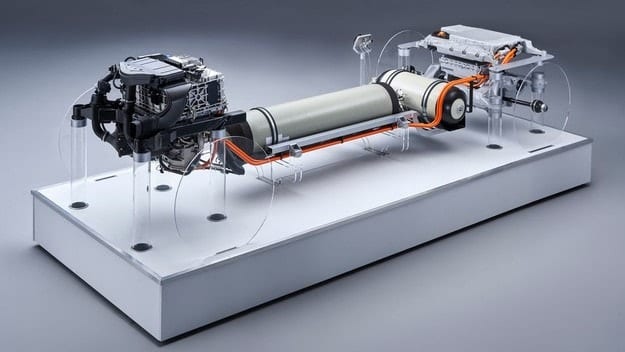
New hydrogen page for BMW
Content
Bavarian company is preparing a small series of X5 with fuel cells
BMW is probably the longest running company in the hydrogen economy. Over the years, the company has been developing hydrogen internal combustion engines. Now another concept is underway.
Electric mobility may arise, but it has its own nuances. Unless, of course, we assume that hydrogen fuel cell vehicles are in this group. This makes perfect sense, given the fact that the cell in question generates electricity based on the combination of hydrogen and oxygen in a chemical device, and it is used to power the electric motor that drives the car. The Volkswagen Group has a sustainable strategy for the development of this type of technology and is entrusted to the development of Audi engineers.
Toyota is also especially active in this activity, which is preparing a new Mirai, as well as Hyundai and Honda. Within the PSA group, Opel is responsible for the development of hydrogen cell technologies, which have decades of experience in this field as a technology platform for General Motors.
Such cars are unlikely to be more common on European roads, but the prospect is nonetheless predictable given the fact that local wind farms can be built to produce electricity and hydrogen from water by supplying hydrogen stations. Fuel cells are an element of the equation that provides the ability to convert excess power to generate electricity from renewable sources into hydrogen and back into energy, that is, to store it.
Through a partnership with Toyota, BMW can also count on a presence in this tiny niche market. A year and a half after the presentation of the BMW I-Hydrogen Next in Frankfurt, BMW has given more details about the vehicle closer to series production – this time based on the current X5. For years, BMW has been demonstrating hydrogen car prototypes that use hydrogen as fuel for internal combustion engines. The hydrogen cell is the best solution in terms of efficiency, but BMW engineers have acquired the necessary experience in the field of combustion processes for fuels that do not contain carbon in their molecules. However, this is a different topic.
Unlike partner Toyota, which will soon launch a second-generation Mirai based on the TNGA modular system, BMW is much more cautious in this area. Therefore, the new I-NEXT is presented not as a production car, but as a small series car that will be presented to a small number of selected buyers. The explanation for this lies in the insignificant infrastructure. “In our opinion, as an energy source, hydrogen should start to be produced in sufficient quantities and with the help of green energy, and also achieve competitive prices. Fuel cell engines will be used in vehicles that are difficult to electrify at this stage, such as heavy trucks,” said Klaus Fröhlich, member of the board of directors of BMW AG and responsible for research and development.
Battery and fuel cell in symbiosis
However, BMW is committed to a clear hydrogen strategy for the long term. This is part of the company's overall strategy to develop a variety of powertrains, not just for battery-powered vehicles. “We are convinced that in the near future there will be different forms of movement, since there is no single solution that would meet all the requirements of customer mobility. We believe that hydrogen as a fuel will become the fourth pillar in our powertrain portfolio in the long term,” adds Fröhlich.
At I-Hydrogen Next, BMW uses technology solutions created in collaboration with industry-leading Toyota. These two companies have been partners in this area since 2013. Under the X5's front cover is a stack of fuel cells that generate electricity during the reaction between hydrogen and oxygen (from the air). The maximum output power that the element can provide is 125 kW. The fuel cell package is a development of a Bavarian company similar to its own battery production (with lithium-ion cells from suppliers such as Samsung SDI), and the cells themselves were created in conjunction with Toyota.

Hydrogen is stored in two tanks of very high pressure (700 bar). The charging process takes four minutes, which is a significant advantage over battery-powered vehicles. The system uses a lithium-ion battery as a buffer element, which provides both recovery during braking and energy balance and, accordingly, assistance during acceleration. In this regard, the system is similar to a hybrid car. All this is necessary, since in practice the output power of the battery is greater than that of the fuel cell, that is, if the latter can charge it at full load, during peak load the battery can provide high output power and system power equal to 374. hp The electric drive itself is the last fifth generation of BMW and will debut in the BMW iX3.
In 2015, BMW introduced a prototype hydrogen car based on the BMW 5 GT, but in practice I-Hydrogen Next will open a new hydrogen page for the brand. It will begin with a small series in 2022, and larger series are expected in the second half of the decade.